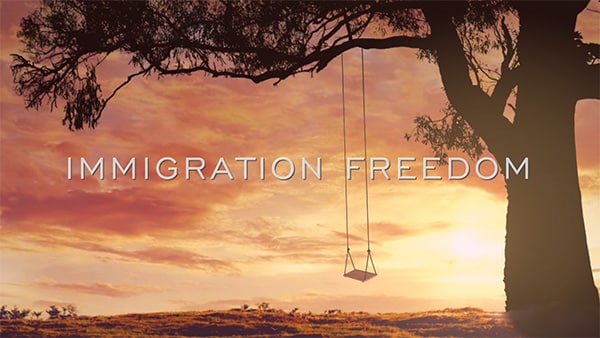Love knows no borders, but bringing that love home to the Dallas-Fort Worth area requires navigating complex government regulations. For U.S. citizens engaged to foreign nationals, the K-1 fiancé(e) visa is often the first step toward a life together in the United States. However, the journey doesn’t end when your partner arrives at DFW International Airport.
The ultimate goal is permanent residency. Moving from a temporary K-1 visa to a Green Card involves a specific legal process known as “Adjustment of Status.” This guide outlines how to navigate this transition for your fiancé(e) and their children, ensuring your new life in Texas starts on solid legal ground.
Understanding the K-1 and K-2 Visas
Before discussing the Green Card, it is essential to understand the status your family members hold.
The K-1 Nonimmigrant Visa allows the foreign-citizen fiancé(e) of a U.S. citizen to travel to the United States specifically to marry their sponsor. Once the marriage takes place, they can apply for lawful permanent residence.
The K-2 Nonimmigrant Visa is for the unmarried children (under 21) of the K-1 fiancé(e). They can accompany their parent to the U.S. and are also eligible to apply for Green Cards once the marriage occurs.
The Critical 90-Day Rule
The most important condition of the K-1 visa is the timeline. You must marry your U.S. citizen sponsor within 90 days of entering the United States.
- If you marry within this window, you can immediately file for Adjustment of Status.
- If you do not marry within 90 days, the K-1 visa holder and any K-2 children must leave the U.S. They cannot extend the visa or change to another nonimmigrant category.
The Path to a Green Card: Adjustment of Status
Once the wedding bells have rung, the next step is securing your future. You do not need to leave the country to apply for your Green Card. Instead, you file for Adjustment of Status (AOS) while living in the U.S.
Step 1: Confirm Eligibility
To adjust status, you must have:
- Entered the U.S. with a valid K-1 visa.
- Married the U.S. citizen who petitioned for you within 90 days of entry.
- Maintained admissibility (no serious criminal issues or immigration violations).
Step 2: File Form I-485
The primary form is Form I-485, Application to Register Permanent Residence or Adjust Status. K-2 children must file their own separate I-485 applications, but they can generally be submitted together with the parent’s application.
Since the K-1 visa is valid for a single entry, it is crucial to file the I-485 as soon as possible after the marriage. While there is no strict deadline to file after marriage, delaying can lead to being “out of status,” which may complicate matters.
Step 3: Work and Travel Permits
While waiting for the Green Card, you likely want to work and perhaps travel. You can apply for:
- Employment Authorization Document (EAD): Allows you to work legally in the U.S.
- Advance Parole: Allows you to travel internationally and return without abandoning your Green Card application.
- Note: Do not leave the U.S. before receiving Advance Parole. If you do, your Green Card application may be considered abandoned.
The Interview Process in DFW
Most Adjustment of Status applicants will be required to attend an interview. For residents of the Metroplex, this usually takes place at the USCIS Dallas Field Office in Irving, TX.
During this interview, a USCIS officer will verify your eligibility. Since you entered on a fiancé(e) visa, the officer will want to confirm:
- The marriage is bona fide (real) and not for immigration purposes.
- You are not inadmissible to the U.S. for health, criminal, or security reasons.
What to bring:
- Original marriage certificate.
- Photos of the wedding and life together in DFW.
- Joint financial documents (bank accounts, leases, insurance) showing a shared life.
- Originals of all documents submitted with your application.
Required Documents Checklist
A successful application relies on thorough documentation. Missing paperwork is the most common cause of delays. You will generally need:
- Form I-485: The main application form.
- Copy of Form I-797: Approval notice for the original I-129F fiancé(e) petition.
- Marriage Certificate: A certified copy proving the marriage occurred within the 90-day window.
- Form I-864, Affidavit of Support: Evidence that the U.S. citizen spouse can financially support the family.
- Form I-693: Report of Medical Examination and Vaccination Record (completed by a designated civil surgeon).
- Proof of Entry: Copy of the K-1 visa and I-94 arrival/departure record.
- Birth Certificates: For the applicant and any K-2 children.
- Passport Photos: Two standard passport-style photos.
Local Resources in the DFW Area
Navigating the transition from fiancé(e) to permanent resident is easier with local support. The Dallas-Fort Worth area offers various resources for immigrants.
USCIS Offices
- Dallas Field Office: Located at 6500 Campus Circle Drive East, Irving, TX 75063. This is where interviews are conducted.
- Application Support Centers (ASCs): Located throughout the DFW area for biometrics (fingerprinting and photos).
Community Support
- Catholic Charities Dallas: Provides low-cost immigration legal services and support programs.
- Mosaic Family Services: Offers support for immigrant survivors of family violence and human trafficking, including legal advocacy.
- Literacy Achieves: Offers English language classes to help new residents integrate into the community.
If you feel overwhelmed by the paperwork or legal requirements, remember that Green Card through Family: Fiancé(e) of a U.S. Citizen or the Fiancé(e)’s Child is a process that benefits greatly from professional oversight.
Why Professional Guidance is Vital
The transition from K-1 to Green Card seems straightforward, but pitfalls exist. Did you marry after day 90? Did you forget to include a required tax return with the Affidavit of Support? Are there children (K-2) who are turning 21 soon?
An experienced immigration attorney can prevent these issues from becoming crises. They ensure your forms are accurate, your evidence is strong, and you are fully prepared for your interview at the Dallas Field Office.
Conclusion
Marrying your U.S. citizen fiancé(e) is a joyous milestone. Securing your Green Card is the practical step that protects your future together. By filing correctly and promptly, you ensure that your family can live, work, and thrive in the United States permanently.
Don’t let bureaucratic errors threaten your new life in Texas. If you are ready to adjust your status or have questions about K-2 children, reach out for professional legal assistance today.






